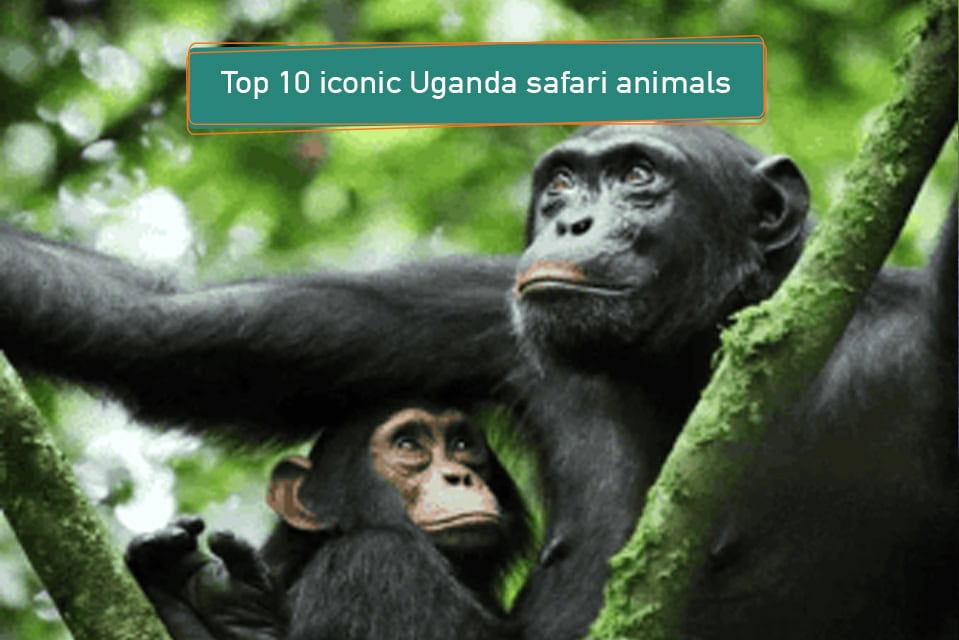
Uganda’s wildlife is incredibly diverse, with over 340 mammal species and more than 1,000 bird species found in its national parks and game reserves. While a complete list of Uganda safari animals would be extensive, we have highlighted 10 must-see animals that should be on your bucket list when exploring the Pearl of Africa.
As an Ugandan safari and tour operator, we often ask our visitors what they hope to see during their trip. In return, many of our guests ask us about the animals they can expect to encounter in Uganda’s protected areas.
While this list only scratches the surface of Uganda’s rich biodiversity, it is meant to inspire your adventure. By seeking out these 10 iconic animals, you are likely to witness an even greater variety of wildlife along the way, as Uganda’s ecosystems are teeming with life at every turn.
Tree-Climbing Lions
No African safari is complete without witnessing the majesty of lions, and in Uganda, you can experience something truly unique—tree-climbing lions. These remarkable big cats are primarily found in the Ishasha sector of Queen Elizabeth National Park, where they can often be seen lounging in the branches of fig trees, surveying the savannah for potential prey. They also climb trees to hide from the scorching sun and sometimes hiding their food. Unlike lions in other parks, the ones in Ishasha have adapted to this rare behavior, making it a must-see spectacle for wildlife enthusiasts.
Beyond Ishasha, lions can also be spotted in other national parks, including Murchison Falls National Park and Kidepo Valley National Park, where they roam the open plains and hunt in prides. No matter where you encounter them, these apex predators are among the most thrilling animals to see on a Uganda safari.
Recommended trip: 6-Day Gorillas, Wildlife and Whitewater Rafting
Leopard
The leopard is one of the most elusive and fascinating animals to spot on an African safari. Known for its stealth and solitary nature, this powerful big cat is distinguished from the cheetah by its rosette-shaped spots and muscular build. Unlike cheetahs, leopards are more adaptable to various environments, preferring wooded and rocky habitats where they can expertly blend into their surroundings.
In Uganda, leopards are present in most national parks, but one of the best places to see them is along the Channel Drive in Queen Elizabeth National Park. You can also see them lying lazily on the rocks in Murchison Falls national park. Their ability to remain hidden makes every sighting a thrilling and memorable experience.
Mountain Gorilla
Mountain gorillas are extraordinary primates, celebrated for their immense strength, intelligence, and intricate social bonds. Among the four gorilla subspecies, only the endangered Mountain Gorilla (Gorilla beringei beringei) inhabits Uganda. These gentle giants thrive in the misty, forested slopes of Bwindi Impenetrable National Park and Mgahinga Gorilla National Park.
Easily recognizable by their powerful builds, thick black fur, and expressive eyes, mountain gorillas live in tight-knit family groups led by a dominant silverback. Their diet consists mainly of leaves, shoots, and fruits. Trekking through Uganda’s mountains to observe them up close is a rare privilege, offering a profound and humbling experience. Beyond the encounter itself, gorilla trekking directly contributes to conservation efforts, ensuring the survival of these magnificent creatures for future generations. You can only see them after purchasing a permit from the Uganda Wildlife Authority through a registered tour operator like Safari Vacations and Travel Services.
Recommended trip: 3-Day Uganda Fly-in Gorilla Safari
Chimpanzee
Chimpanzees, our closest living relatives, are highly intelligent and social primates found in Uganda’s lush rainforests. The species found here is the Eastern Chimpanzee (Pan troglodytes schweinfurthii), recognizable by their black and brown fur and their remarkable agility as they swing effortlessly through the trees.
Living in dynamic communities led by an alpha male, chimpanzees exhibit complex behaviors, including tool use and sophisticated communication through gestures and vocalizations. The best places to observe them in their natural habitat include Kibale National Park, Budongo Forest Reserve, Kalinzu forest, Kaniyo Pabidi Forest, and Kyambura Gorge.
Trekking through these forests offers a unique opportunity to witness their fascinating interactions, gaining deeper insight into their intelligence while actively supporting their conservation. Like gorillas, you can only see chimpanzees after purchasing a permit from the Uganda Wildlife Authority through a registered tour operator like Safari Vacations and Travel Services.
Recommended trip: 5-Day Uganda Primate & Wildlife Safari via Kigali
Golden Monkey
Golden monkeys are strikingly beautiful primates known for their vibrant golden-orange fur and playful nature. These rare monkeys are native to the high-altitude forests of Central Africa, with Uganda’s Mgahinga Gorilla National Park being one of the best places to see them. They thrive in the bamboo forests on the slopes of the Virunga Mountains, where they live in close-knit social groups. Highly energetic and acrobatic, golden monkeys leap through the treetops in search of their primary food sources—bamboo leaves, fruits, and insects. Trekking to see these charismatic primates in Mgahinga is a rewarding experience, making for an excellent safari extension alongside gorilla trekking.
Rhino
Rhinos are massive, thick-skinned mammals known for their distinctive horns and prehistoric appearance. There are two main species: the black rhino and the white rhino. Despite their names, both species have similar grayish-brown coloring. These herbivores primarily feed on grasses, leaves, and shoots.
Uganda was once home to both black and white rhinos, but the black rhino became extinct in the country due to poaching. Today, the best place to see rhinos in Uganda is at Ziwa Rhino Sanctuary, where a growing population of white rhinos can be observed up close on foot during guided tracking experiences. This sanctuary plays a crucial role in rhino conservation and is a perfect stopover on the way to Murchison Falls National Park, hence allowing you to spot the Big 5 on a safari.
Recommended trip: 15-Day Uganda-Rwanda Birding, Primates and Big Five Safari
Buffalo
Buffalo, one of the iconic Big Five animals, are among the most formidable creatures in Uganda’s wilderness. Known for their unpredictable nature and strong defensive instincts, they can easily overpower predators, including lions. These massive herbivores are found in large herds roaming the open savannah and in smaller groups within forested areas.
Buffalo are widespread across Uganda’s national parks, making them a common yet impressive sight on a safari. They’re found in Lake Mburo national Park, Kidepo Valley National park, Murchison Falls National park, and Queen Elizabeth national park. Their resilience, power, and social structure make them a fascinating species to observe, symbolising the untamed beauty of Uganda’s diverse ecosystems.
African Elephant
The African Elephant, the largest land mammal on Earth, is a truly majestic sight on an Uganda safari. Recognized for their enormous size, large fan-shaped ears, and impressive tusks, these gentle giants play a crucial role in maintaining the ecosystem. Uganda is home to both the African Bush Elephant (Loxodonta africana africana) and the African Forest Elephant (Loxodonta cyclotis), with thriving populations in Murchison Falls National Park, Kidepo Valley, and Queen Elizabeth National Park.
The forest elephants are found in Kibale National park and Bwindi Impenetrable national park, though hard to spot because they mostly move at night in search of food. These herbivores consume a diverse range of vegetation, shaping their habitats as they roam. Observing African Elephants in the wild is a humbling experience, showcasing their intelligence, social bonds, and vital contribution to conservation efforts in Uganda’s rich and diverse landscapes.
Recommended trip: 10-Day Uganda-Rwanda Primates and Big Five Safari
Hippo
Hippos are massive semi-aquatic mammals, ranking as the third-largest land animals after elephants and rhinos. Weighing between 1,500 and 1,800 kg, they are uniquely adapted to life in water with their webbed feet, which aid in swimming and navigating rivers and lakes. Unlike humans, hippos do not sweat; instead, they rely on spending long hours submerged in water to regulate their body temperature.
In Uganda, hippos can be spotted in nearly all major water bodies, but the best locations to observe them in their natural habitat include Murchison Falls National Park, Queen Elizabeth National Park, and Lake Mburo National Park. The highest concentration of hippos in Africa is at the Kazinga Channel in Queen Elizabeth National Park and you can see them through boat cruise. Watching these fascinating giants wallow, yawn, and interact in the water is a highlight of any Uganda safari.
Nile Crocodile
The Nile crocodile is the largest living reptile found in Uganda, known for its formidable size and dominant presence in waterways. Easily identified by its olive-green or brownish scales and V-shaped snout, this powerful predator can grow to several meters in length. Nile crocodiles are patient hunters, often lying in wait along riverbanks, lakes, and swamps, ready to ambush fish, birds, and mammals that venture too close.
In Uganda, you can observe these magnificent reptiles in various locations, including the Nile River, Murchison Falls National Park, and Queen Elizabeth National Park. Despite their intimidating size and sharp teeth, Nile crocodiles play a vital role in maintaining the balance of the aquatic ecosystems, making them an essential part of Uganda’s diverse wildlife.
Other Uganda safari animals to spot on a safari
Snakes
Snakes are legless, elongated reptiles that thrive in a variety of habitats across Uganda. They vary greatly in size, coloration, and behaviour, with some being harmless while others are highly venomous. Among the most notable species in Uganda are the African Rock Python, Black Mamba, and Puff Adder.
- The African Rock Python is one of the largest snake species in the world, known for its powerful constriction and striking patterned scales.
- The Black Mamba, a sleek and fast-moving snake, is one of Africa’s most venomous reptiles, recognized by its dark mouth interior and impressive speed.
- The Puff Adder is a heavily built snake with a triangular head and excellent camouflage, making it one of the most frequently encountered venomous snakes in the region.
Despite their fearsome reputation, snakes play a crucial role in maintaining ecological balance by controlling rodent populations. While they can be found in forests, grasslands, and near water sources, they are generally shy and tend to avoid human interaction. Caution and respect should always be exercised when encountering snakes in the wild.
Zebra
Zebras are iconic animals, easily recognized by their striking black-and-white striped coats. Each zebra has a unique stripe pattern, making them truly one of nature’s most visually fascinating creatures. In Uganda, the Plains Zebra (Equus quagga) is the most common species, primarily inhabiting open savannahs and grasslands.
The best places to see zebras in Uganda are Kidepo Valley National Park and Lake Mburo National Park, where they roam in herds, grazing on grass and interacting socially. Their group dynamics help them stay alert to predators, as they rely on each other for protection. Watching zebras against the backdrop of Uganda’s breathtaking landscapes is a mesmerizing experience,
offering an excellent opportunity for photography and wildlife observation.
Giraffe
A visit to Uganda’s top safari destinations wouldn’t be complete without seeing a giraffe, one of the most magnificent animals in the wild. Uganda is home to the Rothschild’s giraffe, also known as the Baringo giraffe or Ugandan giraffe, one of the most endangered giraffe subspecies.
These towering creatures can reach up to 18 feet in height and weigh over 2,000 pounds. They are easily recognizable by their unique coat pattern of dark patches on a creamy white background.
The Nubian giraffe, another rare subspecies, can also be found in Uganda. Unlike the Rothschild’s giraffe, the Nubian giraffe has large, irregularly shaped spots that cover its entire body.
Giraffes move gracefully, using a distinctive gait where they move both right legs simultaneously, followed by both left legs, creating a smooth swaying motion. The best places to see giraffes in Uganda include Murchison Falls National Park, Lake Mburo National Park, and Kidepo Valley National Park, where they roam the vast savannah in search of acacia leaves, their
favorite food.
Cheetah
The cheetah is a sleek and agile predator, recognized by its greyhound-like build, heavily spotted coat, and distinctive black tear markings running down its face. Known as the fastest land animal, the cheetah relies on its incredible speed to hunt rather than brute strength, making it the least powerful among Africa’s large predators. In Uganda, cheetahs are rare and can only be found in select habitats, specifically the open grasslands and savannahs of Kidepo Valley National Park and Pian Upe Wildlife Reserve. Spotting these elusive big cats in the wild is a truly special experience for any safari enthusiast.
What is the best time for spotting wildlife in Uganda?
Uganda’s national parks are open for wildlife viewing throughout the year, but the best time for spotting animals is during the dry seasons, which occur from June to August and December to February. During these months, animals tend to congregate near rivers and water sources, making them easier to spot. Additionally, road and trail conditions are more favorable, allowing for smoother game drives and trekking experiences. The weather is generally clearer, providing excellent opportunities for photography and uninterrupted safaris.
In contrast, the rainy seasons, which fall between March to May and September to November, can make wildlife spotting more challenging. Roads often become muddy and difficult to navigate, while hiking trails can be slippery, making trekking more strenuous. The lush vegetation during these months may also obstruct views of wildlife.
Despite these seasonal variations, Uganda’s warm tropical climate supports an incredibly diverse ecosystem, ranging from mammals and primates to reptiles and over 1,000 bird species. The country’s breathtaking landscapes transition from savannahs and tropical forests to mountain and wetland vegetation, offering a spectacular backdrop for unforgettable wildlife encounters.
| Month | Avg Temp (°C) | Avg Rain (mm) | Season | Wildlife Viewing Notes |
|---|---|---|---|---|
| January | 23–30 | 50 | Dry | Excellent for game drives & gorilla trekking. |
| February | 23–31 | 60 | Dry | Great for wildlife spotting, start of heat buildup. |
| March | 22–29 | 130 | Green (wet) | Rain begins; fewer crowds, but trails can be muddy. |
| April | 21–28 | 175 | Green (wet) | Wettest month; good birding but harder game drives. |
| May | 21–27 | 150 | Green (wet) | Lush scenery, wildlife harder to spot in thick bush. |
| June | 20–27 | 60 | Dry | Excellent – start of peak safari season, cool & comfortable. |
| July | 20–26 | 45 | Dry | Prime time for all parks, especially Queen Elizabeth NP. |
| August | 21–27 | 55 | Dry | Great visibility, elephants and cats near water sources. |
| September | 21–27 | 80 | Dry | Still excellent; slight increase in rain late month. |
| October | 21–27 | 120 | Green (wet) | Rain returns; fewer tourists, good for discounts. |
| November | 21–28 | 130 | Green (wet) | Great for birdwatching, wet but manageable conditions. |
| December | 22–29 | 75 | Dry | Start of dry season; festive safari season, great views. |
🐘 Best months for wildlife: June to September, and December to February
🦍 Best for gorilla trekking: January–February & June–August (drier trails)
🦜 Best for birding: November–April (migratory birds + breeding season)
___________________________________________________________________________
How to book a Uganda wildlife safari
Booking a wildlife safari in Uganda is a seamless process, offering travelers the opportunity to explore diverse landscapes and encounter a variety of animal species. With years of experience in crafting personalized safari experiences, Safari vacations and Travel Services has been designing customized Uganda journeys since 2015. Their expertise ensures that every itinerary is
tailored to match travelers’ preferences and expectations, allowing them to fully immerse themselves in Uganda’s breathtaking wilderness.
The process of booking a safari with Safari Vacations and Travel Services is designed to be effortless and exciting. By handling all the logistics and intricate planning, Safari vacations and Travel Services makes it easy for visitors to focus on the adventure ahead while experiencing Uganda’s stunning wildlife and natural beauty.
Leave a Reply
Your email address will not be published. Required fields are marked *

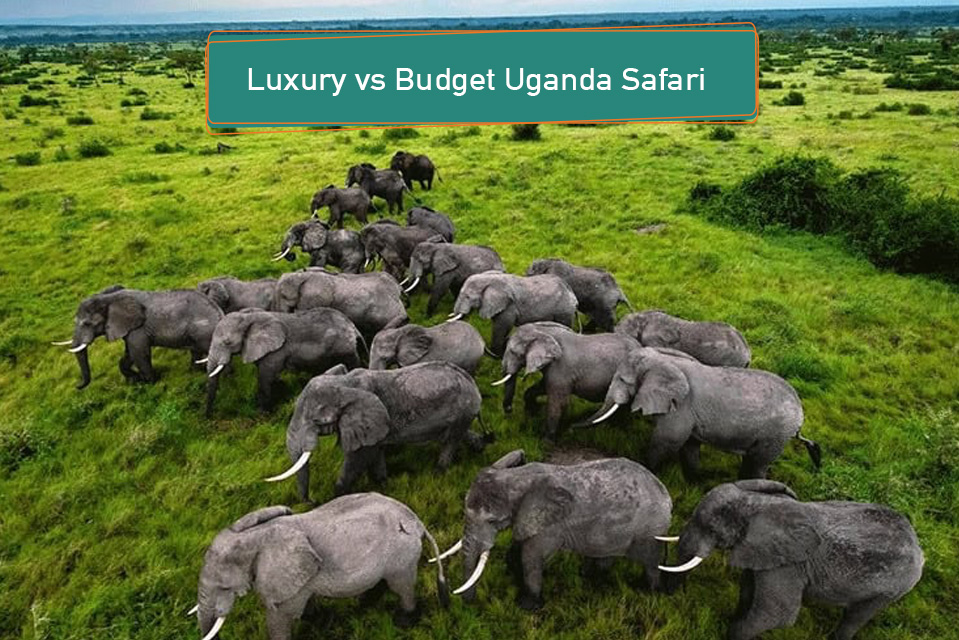
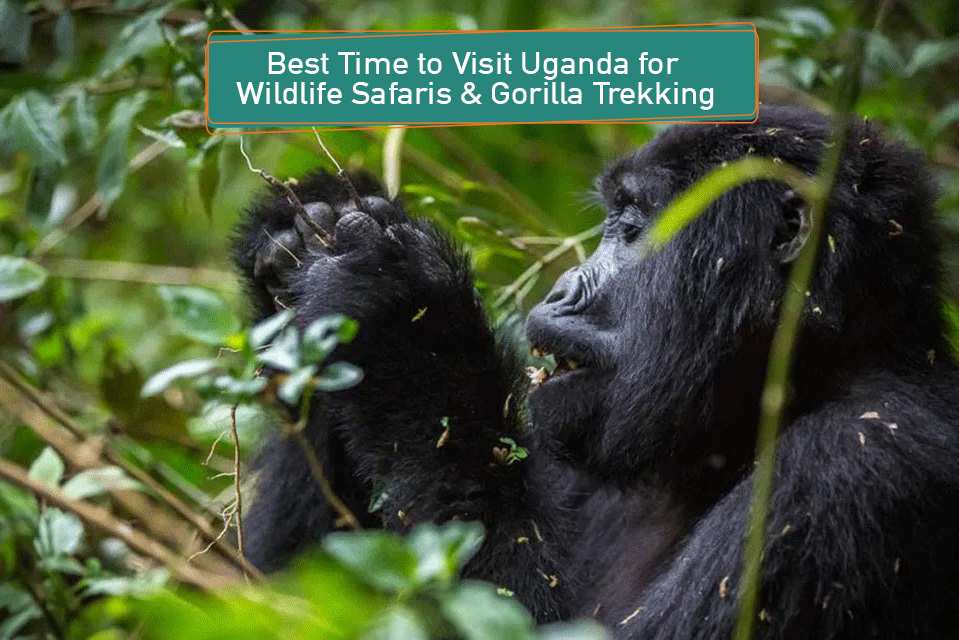
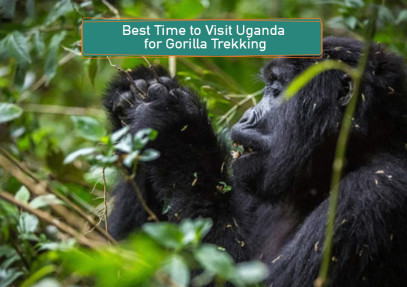
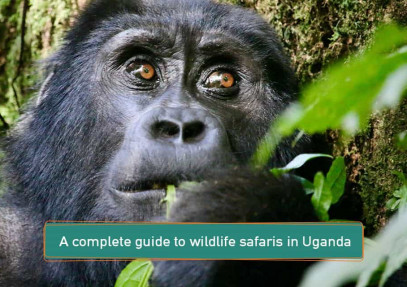
No Comments